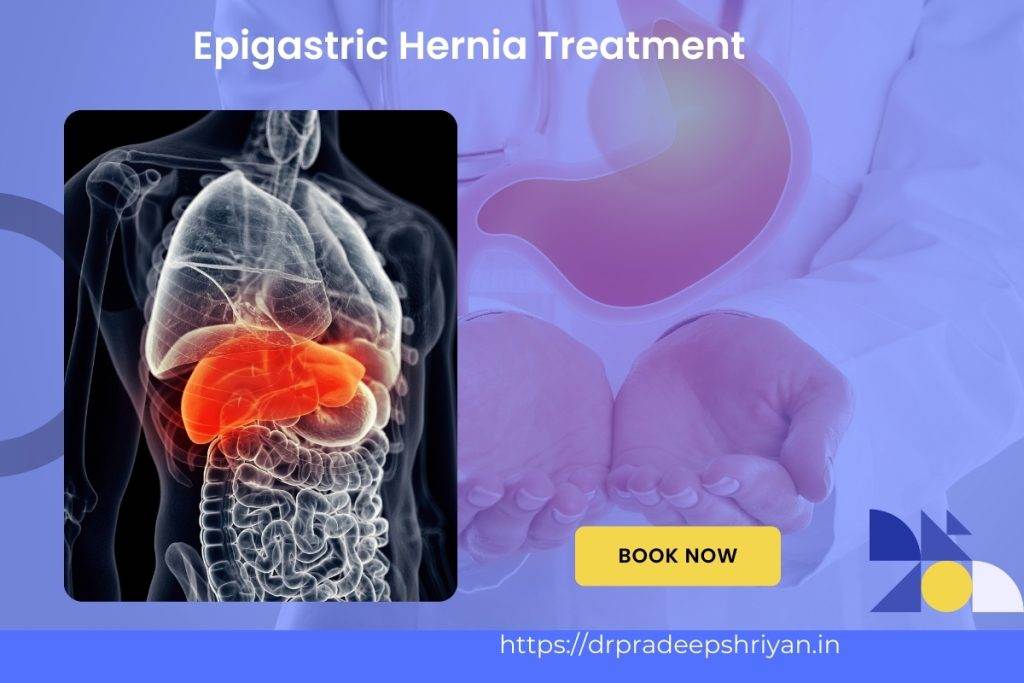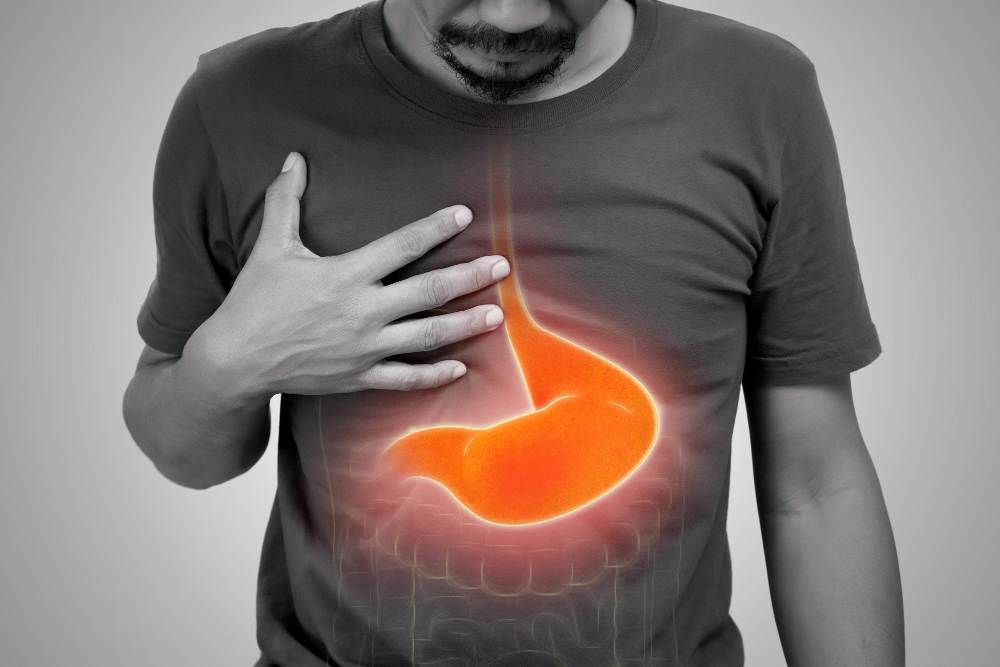In this detailed guide, we define the prevalent penile infections seen and share ways to prevent as well as heal from them effectively for men of all ages.
An epigastric hernia is a medical condition where tissue, often fatty tissue or part of the intestine, pushes through a weakened area in the abdominal wall between the chest and the navel. This results in a small bulge or lump that you might feel or see in the upper part of your abdomen. Read below in detail as explained by the Senior Specialist for Epigastric Hernia Treatment in Mumbai.
An epigastric hernia is a medical condition where tissue, often fatty tissue or part of the intestine, pushes through a weakened area in the abdominal wall between the chest and the navel. This results in a small bulge or lump that you might feel or see in the upper part of your abdomen. While epigastric hernias can be present at birth, they can also develop later in life due to various factors. Although not always painful, they can cause discomfort, especially when you strain the abdominal muscles. If left untreated, complications such as strangulation can occur, necessitating prompt medical attention.
Epigastric hernias can vary in size, from small, barely noticeable bulges to larger, more prominent protrusions. While some may cause minimal discomfort, others can lead to significant pain and complications if left untreated. Our team of specialists has encountered a wide range of cases, from mild to severe

Understanding the causes of epigastric hernias is crucial for both prevention and treatment. Several factors that contribute to the development of this condition:
By identifying these causes, we can work with patients to develop strategies for prevention and management of epigastric hernias.
Recognizing the symptoms of an epigastric hernia is crucial for timely treatment. You might experience:
It’s important to note that symptoms can range from mild to severe, and some patients may not experience any discomfort at all. However, even asymptomatic hernias should be evaluated by an General Surgeon to prevent potential complications.
Accurate diagnosis is crucial for effective treatment of epigastric hernias. As experienced Epigastric Hernia Specialists in Mumbai, we employ a range of diagnostic procedures to ensure precise identification and assessment of the condition. These procedures include:
By utilizing these advanced diagnostic tools, we can accurately assess the size, location, and severity of epigastric hernias, allowing us to develop treatment method for each patient.
Aspect | Details |
Common Symptoms | Visible bulge, discomfort or pain, nausea, vomiting, tenderness |
Causes | Congenital weakness, increased abdominal pressure, aging, past surgeries, physical strain |
Diagnostic Tests | Physical examination, ultrasound, CT scan, MRI, medical history |
Treatment Options | Watchful waiting, lifestyle changes, open hernia repair, laparoscopic repair |
Risk Factors | Heavy lifting, chronic cough, obesity, pregnancy, previous hernia |
Complications | Strangulation, bowel obstruction, recurrence |
Not always. Small, asymptomatic hernias may be managed with watchful waiting. However, larger or symptomatic hernias often require surgical repair to prevent complications.
Recovery time varies depending on the surgical method and individual factors. Generally, patients can return to light activities within 1-2 weeks and resume normal activities after 4-6 weeks.
While surgery is the definitive treatment, lifestyle modifications such as weight loss, avoiding heavy lifting, and quitting smoking can help manage symptoms and prevent worsening of the hernia.
Untreated hernias can lead to complications such as strangulation, where the blood supply to the herniated tissue is cut off, potentially causing tissue death and requiring emergency surgery.
Diagnosis involves a physical examination, imaging tests (ultrasound, CT scan, MRI), and review of medical history.
Treatment options include watchful waiting, lifestyle changes, open hernia repair, and laparoscopic hernia repair.
Recovery time varies. Laparoscopic surgery typically offers a quicker recovery, usually within 1-2 weeks, while open surgery may take longer.
While recurrence is possible, proper surgical techniques and post-operative care significantly reduce this risk.

Understanding the cost and insurance aspects of epigastric hernia treatment is essential. You should consider:
Dr. Pradeep Shriyan, a seasoned and accomplished laparoscopic and general surgeon, is a trusted professional serving the Mumbai Suburban. With a wealth of experience and expertise, Dr. Pradeep Shriyan specializes in a wide range of procedures.
Whether you require expert care for hernia repair, recurrent hernia or any other related condition, we invite you to schedule an appointment with the highly skilled and trusted professional, Dr. Pradeep Shriyan. With his extensive expertise and experience, Dr. Shriyan is committed to delivering top-notch surgical interventions to address your specific needs.
Take the first step towards improved health and well-being by booking an appointment with Dr. Pradeep Shriyan today.
In this detailed guide, we define the prevalent penile infections seen and share ways to prevent as well as heal from them effectively for men of all ages.
Discover the reasons behind hernias. Early signs of Hernia and when to seek help of hernia surgeon
• Have nothing to eat or drink 6 Hours before surgery except for prescribed medications you have been told to take with a sip of water.
• Report 2 hours before the Surgery time (OT Procedure)
• Carry Doctor’s Case Paper on which treatment is written at the time of Admission to Hospital
• Carry Insurance Documents with you to the Hospital before Admission
• Do not apply any lotions, perfumes, deodorants, or Nail polish before surgery
• Take off your jewellery including earrings and piercings
• Don’t shave the area, this will be taken care by Hospital nurse
1. Take pain relieving and other medications as advised. Pain-relieving medication should be taken with food.
2. Follow-up with the doctor after a period of 10 days.
3. Eat a healthy diet and drink plenty of non-alcoholic and non-caffeinated drinks.
4. Do not operate any machinery, or lift any heavy articles after Surgery
5. Rest for a few days after the surgery is advisable, but keep mobile.
6. Avoid Bath till the dressing and stiches gets dissolve but if Waterproof dressing is used then can take a bath.
Please consult doctor immediately if you experience any of the following symptoms:
• Large amount of swelling under the wound • Increased drainage from the incision (Operated area) • Increased redness around the operated area • Sudden calf pain or shortness of breath • Foul odour from operated area • Chest pain • Fever greater than 38.0 degrees C.
Developed by PRAZONE Web Solutions
Copyright © 2024 All rights reserved by
Dr Pradeep Shriyan